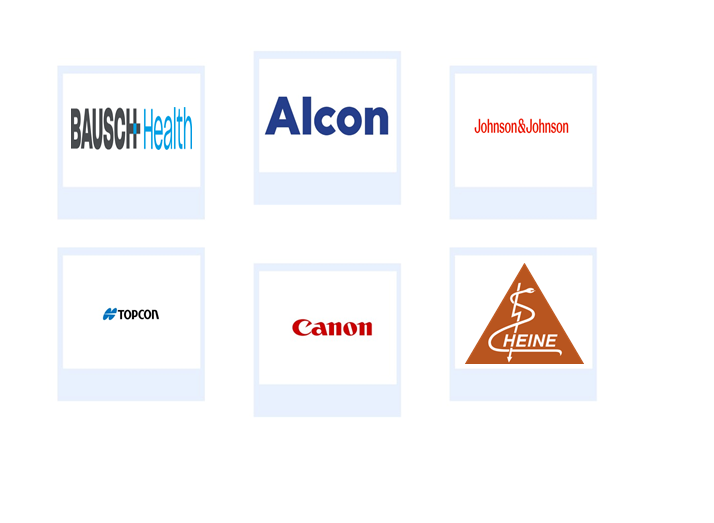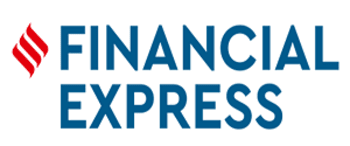The Middle East & Africa ophthalmic equipment market will add over USD 860M by 2030 as demand rises.
- Historical Period2019-2023
- Base Year2024
- Forecast Period2025-2030
- Largest MarketSaudi Arabia
- Fastest Market South Africa
- Market Difference(2025-2030) USD 860
- Format
Featured Companies
- 1. Johnson & Johnson Private Limited
- 2. EssilorLuxottica
- 3. Bausch Health Companies Inc.
- 4. Hoya Corporation
- 5. Carl Zeiss AG,
- 6. Lime Crime
- More...
Ophthalmic Equipment Market Analysis
The Middle East and Africa ophthalmic equipment market has witnessed significant evolution over the past few decades, with an increasing focus on advancing diagnostic and treatment technologies to address the rising burden of eye-related diseases in the region. Ophthalmic equipment, which encompasses a wide range of devices used to diagnose, treat, and monitor eye conditions, includes tools such as retinal imaging systems, optical coherence tomography (OCT) devices, fundus cameras, and surgical instruments like phacoemulsification machines for cataract surgeries. Introduced in the early 20th century, these technologies were developed to provide medical professionals with precise diagnostic data and surgical capabilities, enabling more effective treatment of common and complex eye diseases like cataracts, glaucoma, and macular degeneration. The introduction of ophthalmic equipment was a direct response to the growing need for specialized tools that could enhance both the detection and treatment of eye conditions that were often not sufficiently addressed with basic tools or techniques. The market has evolved with the time, spurred by technological innovations that enhance the accuracy, efficiency, and safety of eye care. Initially, diagnostic and surgical equipment was limited in scope and accessibility, but as demand grew, the market saw the emergence of sophisticated imaging technologies and minimally invasive surgical instruments. Today, these devices play an integral role in the medical landscape, aiding healthcare professionals in detecting early signs of eye conditions, planning surgeries, and monitoring patients post-treatment. According to the research report, "Middle East and Africa Ophthalmic Equipment Market Outlook, 2030," published by Bonafide Research, the Middle East and Africa Ophthalmic Equipment market is anticipated to add to more than USD 860 Million by 2025–30. The market has experienced steady growth due to the rising prevalence of eye diseases, greater healthcare awareness, and advancements in ophthalmic technologies. However, the COVID-19 pandemic had a notable impact on the ophthalmic equipment market, temporarily disrupting supply chains, delaying elective surgeries, and shifting healthcare priorities. Post-pandemic, the market has rebounded, supported by innovations in telemedicine and remote diagnostics that facilitate access to eye care services in the post-pandemic era. Leading companies in the region, such as Alcon Laboratories, Carl Zeiss Meditec, Johnson & Johnson Vision, and Essilor, are prominent market players that drive the market forward. These companies maintain a strong market presence through strategic product offerings, extensive marketing campaigns, and robust distribution networks. Their products are marketed to hospitals, ophthalmology clinics, and research institutions, with pricing models that vary based on the technological complexity of the equipment. Healthcare providers and patients are the primary consumers of ophthalmic equipment, purchasing through direct procurement channels, authorized resellers, or online platforms, depending on the region's infrastructure. Manufacturers and sellers must adhere to strict regulations set by organizations like the World Health Organization (WHO) and local regulatory bodies such as the Saudi Food and Drug Authority (SFDA) and South African Health Products Regulatory Authority (SAHPRA) to ensure that ophthalmic devices meet international safety and efficacy standards. These regulations are critical for ensuring the quality of products, safeguarding patient health, and ensuring reliable market access. Strict compliance with these standards not only ensures consumer safety but also helps enhance market confidence, leading to steady business growth.
Click Here to Download this information in a PDF
What's Inside a Bonafide Research`s industry report?
A Bonafide Research industry report provides in-depth market analysis, trends, competitive insights, and strategic recommendations to help businesses make informed decisions.
Download SampleMarket Dynamic
Market Drivers • Growing Geriatric Population: The increasing elderly population in the Middle East and Africa is a key driver for the ophthalmic equipment market. As age-related vision conditions such as cataracts and macular degeneration rise among older adults, there is a heightened demand for specialized diagnostic tools like fundus cameras and optical coherence tomography (OCT) devices. The aging demographic in countries such as Saudi Arabia and South Africa significantly contributes to the market's expansion. • Increase in Diabetes Prevalence: The growing number of diabetes cases in the Middle East and Africa is another major driver, as individuals with diabetes are more prone to eye complications like diabetic retinopathy. This has led to a surge in demand for retinal imaging devices and other diagnostic tools aimed at early detection and management of diabetic-related eye conditions, driving the need for advanced ophthalmic equipment. Market Challenges • Limited Healthcare Infrastructure in Rural Areas: Many parts of the Middle East and Africa still face a significant gap in healthcare infrastructure, particularly in rural and remote regions. This makes the distribution and access to high-end ophthalmic equipment, such as surgical lasers and retinal imaging devices, challenging. The lack of sufficient healthcare facilities and trained personnel in these areas hinders the overall growth of the ophthalmic equipment market. • Regulatory Hurdles and Delays in Approvals: Regulatory approval processes for ophthalmic equipment in countries like Egypt and Nigeria can be lengthy and complex. Manufacturers must navigate through various local health regulations, including stringent compliance standards set by authorities such as the Saudi Food and Drug Authority (SFDA) and Nigerian National Agency for Food and Drug Administration and Control (NAFDAC), which can delay market entry and increase costs for businesses. Market Trends • Shift Toward Teleophthalmology: The rise of telemedicine in the Middle East and Africa, accelerated by the COVID-19 pandemic, has led to a shift toward teleophthalmology. This involves the remote diagnosis and monitoring of eye conditions using AI-enabled diagnostic tools and mobile imaging devices. Countries like UAE and South Africa are adopting these technologies to increase accessibility to eye care, especially in underserved areas. • Focus on Affordable Ophthalmic Devices: In response to economic disparities and varying levels of healthcare funding across the region, there is a trend toward the development and adoption of more affordable ophthalmic equipment. Manufacturers are focusing on cost-effective solutions like portable eye exam devices and entry-level diagnostic tools to cater to the needs of lower-income populations, particularly in Sub-Saharan Africa where access to healthcare resources is often limited.
Ophthalmic Equipment Segmentation
| By Product | Surgical Devices | |
| Diagnostic Devices | ||
| Vision Care Devices | ||
| By Application | Cataract | |
| Glaucoma | ||
| Vitreo Retinal Disorders | ||
| Refractor Disorders | ||
| Other Applications | ||
| By End Users | Consumers | |
| Hospitals | ||
| Specialty Clinics & Ambulatory Surgery Centers | ||
| Other End Users | ||
| MEA | United Arab Emirates | |
| Saudi Arabia | ||
| South Africa | ||
Diagnostic devices are the largest product segment in the Middle East and Africa ophthalmic equipment industry due to the increasing demand for early detection and accurate diagnosis of a wide range of eye diseases. The demand for diagnostic ophthalmic equipment has grown significantly across the region as healthcare providers and medical practitioners emphasize the importance of early detection in preventing vision loss and improving patient outcomes. In regions like the Middle East and Africa, where there is a rising prevalence of eye conditions such as cataracts, glaucoma, and diabetic retinopathy, diagnostic tools like optical coherence tomography (OCT), retinal imaging systems, and visual field analyzers have become indispensable. These devices enable healthcare professionals to detect conditions at an early stage, often before noticeable symptoms appear, allowing for timely intervention and more effective treatments. As a result, hospitals and ophthalmology clinics are increasingly investing in advanced diagnostic technologies to improve the accuracy of diagnoses and streamline patient care. The growing aging population in the region, particularly in countries like Saudi Arabia and the UAE, further drives the demand for diagnostic equipment, as age-related eye conditions require continuous monitoring. Additionally, the shift toward more specialized care, with a focus on precision and personalized treatment, has increased the reliance on high-quality diagnostic equipment to tailor therapies to individual patient needs. The evolution of artificial intelligence and machine learning in diagnostic tools also plays a crucial role in this market growth, as these technologies enhance diagnostic accuracy and support clinicians in making faster, more informed decisions, contributing to the larger share of diagnostic devices in the overall ophthalmic equipment market. Refractive disorders are a significant application in the Middle East and Africa ophthalmic equipment industry due to the high prevalence of conditions like myopia, hyperopia, and astigmatism, which require accurate and advanced diagnostic tools for correction. In the Middle East and Africa, refractive disorders, particularly myopia, have seen a steady rise, especially among younger populations in urban areas. The demand for ophthalmic equipment to correct these conditions is substantial, as millions of people in the region suffer from unaddressed vision problems that affect daily life and productivity. As the population grows and more people are becoming aware of the importance of eye health, the need for devices that accurately diagnose and treat refractive errors is more pronounced. Equipment like auto-refractometers and keratometers is essential in diagnosing the type and degree of refractive disorders, allowing for more precise prescriptions for glasses and contact lenses. Additionally, with the increasing awareness of refractive surgeries such as LASIK and PRK, the market for ophthalmic devices used in these procedures is also growing. These technologies have revolutionized vision correction by offering patients a long-term solution with minimal recovery times. The growing demand for refractive disorder correction, combined with the adoption of advanced technologies like wavefront-guided refractive surgery and optical coherence tomography for pre-surgical assessments, highlights the critical role of refractive disorder treatments in the region’s ophthalmic equipment market. Hospitals are a significant end user in the Middle East and Africa ophthalmic equipment industry due to their role as the primary centers for specialized eye care, where advanced diagnostic and surgical equipment is essential for treating a wide range of ocular conditions. In Middle East and Africa, hospitals are at the forefront of providing comprehensive ophthalmic care, equipped with the latest technologies to treat conditions such as cataracts, glaucoma, and diabetic retinopathy. These healthcare institutions invest heavily in advanced ophthalmic equipment to offer specialized services such as cataract surgeries, retinal diagnostics, and laser treatments. The need for such equipment is growing in tandem with the rising number of eye-related diseases, particularly in aging populations in countries like Saudi Arabia, the UAE, and South Africa. Hospitals are also critical in providing integrated care, as they combine specialized ophthalmic services with other healthcare disciplines, allowing for comprehensive treatment plans that address both the eye condition and any underlying health issues. The increasing adoption of robotic surgery systems, AI-assisted diagnostic tools, and advanced imaging technologies further highlights the significant role hospitals play in delivering cutting-edge ophthalmic care. Furthermore, hospitals serve as training grounds for ophthalmologists and medical professionals, ensuring that the latest technologies are utilized effectively. As the healthcare infrastructure in the region continues to expand and improve, hospitals will remain the key purchasers of ophthalmic equipment, driving demand for innovations in diagnostic and surgical tools. With the rise of medical tourism in certain Middle Eastern countries, hospitals are also seeing an influx of international patients seeking high-quality eye care, which further contributes to the growth of the ophthalmic equipment market.
Click Here to Download this information in a PDF
Ophthalmic Equipment Market Regional Insights
Saudi Arabia is leading the ophthalmic equipment industry in the Middle East and Africa due to its advanced healthcare infrastructure, increasing investments in medical technology, and a growing demand for specialized eye care services. The kingdom's strategic investments in healthcare infrastructure, including state-of-the-art medical facilities and advanced eye care centers, have made it a regional hub for ophthalmic treatments and technologies. The Saudi government has been heavily investing in upgrading healthcare services through initiatives such as Vision 2030, which includes enhancing healthcare access and promoting medical tourism. This has contributed to an increase in demand for advanced ophthalmic equipment, such as retinal imaging systems, laser eye surgery devices, and phacoemulsification machines for cataract treatment. Saudi Arabia's relatively high GDP and robust public health funding further support the procurement of cutting-edge ophthalmic technologies, positioning it as a leader in the region. Additionally, Saudi Arabia's growing population, combined with a rapidly aging demographic, has spurred the need for more advanced diagnostic and treatment solutions for eye diseases like glaucoma, macular degeneration, and diabetic retinopathy. The country also serves as a primary destination for medical tourists from neighboring nations seeking specialized ophthalmic care, which bolsters demand for the latest ophthalmic equipment. Furthermore, Saudi Arabia has been an early adopter of new technologies, such as robot-assisted surgeries and AI-driven diagnostic tools, which have advanced the level of care provided.
Click Here to Download this information in a PDF
Companies Mentioned
- Johnson & Johnson Private Limited
- EssilorLuxottica
- Bausch Health Companies Inc.
- Hoya Corporation
- Carl Zeiss AG,
- Lime Crime
- Alcon Inc.
- Topcon Corporation

Table of Contents
- 1. Executive Summary
- 2. Research Methodology
- 2.1. Secondary Research
- 2.2. Primary Data Collection
- 2.3. Market Formation & Validation
- 2.4. Report Writing, Quality Check & Delivery
- 3. Market Structure
- 3.1. Market Considerate
- 3.2. Assumptions
- 3.3. Limitations
- 3.4. Abbreviations
- 3.5. Sources
- 3.6. Definitions
- 4. Economic /Demographic Snapshot
- 5. Middle East & Africa Ophthalmic Equipments Market Outlook
- 5.1. Market Size By Value
- 5.2. Market Share By Country
- 5.3. Market Size and Forecast, By Product
- 5.4. Market Size and Forecast, By Application
- 5.5. Market Size and Forecast, By End Users
- 6. Market Dynamics
- 6.1. Market Drivers & Opportunities
- 6.2. Market Restraints & Challenges
- 6.3. Market Trends
- 6.3.1. XXXX
- 6.3.2. XXXX
- 6.3.3. XXXX
- 6.3.4. XXXX
- 6.3.5. XXXX
- 6.4. Supply chain Analysis
- 6.5. Policy & Regulatory Framework
- 6.6. Industry Experts Views
- 6.7. United Arab Emirates (UAE) Ophthalmic Equipments Market Outlook
- 6.7.1. Market Size by Value
- 6.7.2. Market Size and Forecast By Product
- 6.7.3. Market Size and Forecast By Application
- 6.7.4. Market Size and Forecast By End Users
- 6.8. Saudi Arabia Ophthalmic Equipments Market Outlook
- 6.8.1. Market Size by Value
- 6.8.2. Market Size and Forecast By Product
- 6.8.3. Market Size and Forecast By Application
- 6.8.4. Market Size and Forecast By End Users
- 6.9. South Africa Ophthalmic Equipments Market Outlook
- 6.9.1. Market Size by Value
- 6.9.2. Market Size and Forecast By Product
- 6.9.3. Market Size and Forecast By Application
- 6.9.4. Market Size and Forecast By End Users
- 7. Competitive Landscape
- 7.1. Competitive Dashboard
- 7.2. Business Strategies Adopted by Key Players
- 7.3. Key Players Market Positioning Matrix
- 7.4. Porter's Five Forces
- 7.5. Company Profile
- 7.5.1. Bausch Health Companies Inc.
- 7.5.1.1. Company Snapshot
- 7.5.1.2. Company Overview
- 7.5.1.3. Financial Highlights
- 7.5.1.4. Geographic Insights
- 7.5.1.5. Business Segment & Performance
- 7.5.1.6. Product Portfolio
- 7.5.1.7. Key Executives
- 7.5.1.8. Strategic Moves & Developments
- 7.5.2. Alcon Inc.
- 7.5.3. Johnson & Johnson
- 7.5.4. Topcon Corporation
- 7.5.5. Canon Inc.
- 7.5.6. Carl Zeiss Meditec AG
- 7.5.7. Hoya Corporation
- 7.5.8. EssilorLuxottica S.A.
- 8. Strategic Recommendations
- 9. Annexure
- 9.1. FAQ`s
- 9.2. Notes
- 9.3. Related Reports
- 10. Disclaimer
Table 2: Top 10 Counties Economic Snapshot 2022
Table 3: Economic Snapshot of Other Prominent Countries 2022
Table 4: Average Exchange Rates for Converting Foreign Currencies into U.S. Dollars
Table 5: Middle East & Africa Ophthalmic Equipments Market Size and Forecast, By Product (2019 to 2030F) (In USD Million)
Table 6: Middle East & Africa Ophthalmic Equipments Market Size and Forecast, By Application (2019 to 2030F) (In USD Million)
Table 7: Middle East & Africa Ophthalmic Equipments Market Size and Forecast, By End Users (2019 to 2030F) (In USD Million)
Table 8: Influencing Factors for Ophthalmic Equipments Market, 2024
Table 9: United Arab Emirates (UAE) Ophthalmic Equipments Market Size and Forecast By Product (2019 to 2030F) (In USD Million)
Table 10: United Arab Emirates (UAE) Ophthalmic Equipments Market Size and Forecast By Application (2019 to 2030F) (In USD Million)
Table 11: United Arab Emirates (UAE) Ophthalmic Equipments Market Size and Forecast By End Users (2019 to 2030F) (In USD Million)
Table 12: Saudi Arabia Ophthalmic Equipments Market Size and Forecast By Product (2019 to 2030F) (In USD Million)
Table 13: Saudi Arabia Ophthalmic Equipments Market Size and Forecast By Application (2019 to 2030F) (In USD Million)
Table 14: Saudi Arabia Ophthalmic Equipments Market Size and Forecast By End Users (2019 to 2030F) (In USD Million)
Table 15: South Africa Ophthalmic Equipments Market Size and Forecast By Product (2019 to 2030F) (In USD Million)
Table 16: South Africa Ophthalmic Equipments Market Size and Forecast By Application (2019 to 2030F) (In USD Million)
Table 17: South Africa Ophthalmic Equipments Market Size and Forecast By End Users (2019 to 2030F) (In USD Million)
Table 18: Competitive Dashboard of top 5 players, 2024
Figure 2: Market attractiveness Index, By Region 2030
Figure 3: Market attractiveness Index, By Segment 2030
Figure 4: Middle East & Africa Ophthalmic Equipments Market Size By Value (2019, 2024 & 2030F) (in USD Million)
Figure 5: Middle East & Africa Ophthalmic Equipments Market Share By Country (2024)
Figure 6: United Arab Emirates (UAE) Ophthalmic Equipments Market Size By Value (2019, 2024 & 2030F) (in USD Million)
Figure 7: Saudi Arabia Ophthalmic Equipments Market Size By Value (2019, 2024 & 2030F) (in USD Million)
Figure 8: South Africa Ophthalmic Equipments Market Size By Value (2019, 2024 & 2030F) (in USD Million)
Figure 9: Porter's Five Forces of Global Ophthalmic Equipments Market
Ophthalmic Equipment Market Research FAQs
Related Reports
 We are friendly and approachable, give us a call.
We are friendly and approachable, give us a call.





.png)









